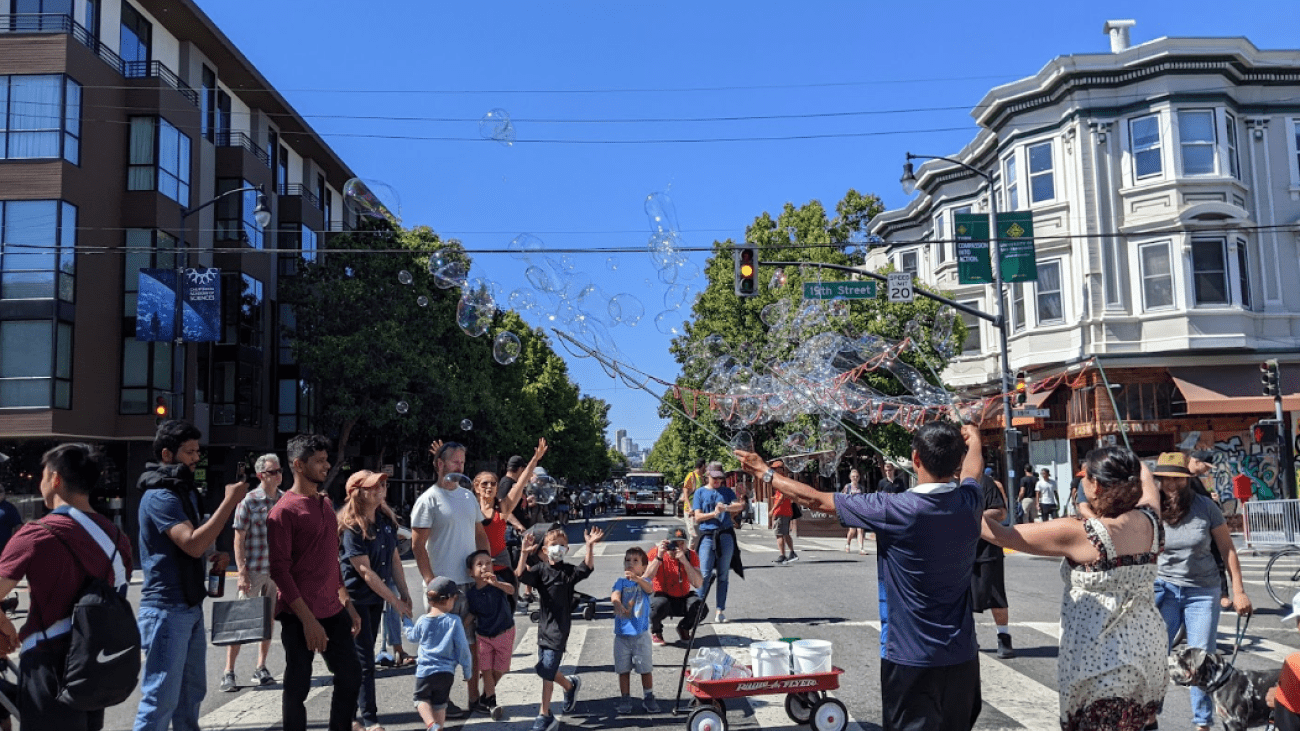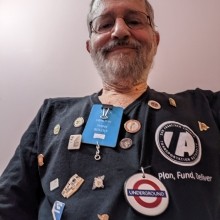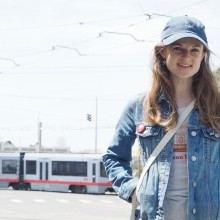
The Transportation Authority’s Community Advisory Committee consists of 11 community members, each representing one of San Francisco’s supervisorial districts, appointed by the Transportation Authority board members. The committee comes together each month to discuss and provide input and feedback on proposed transportation projects, policies, and investments, in an advisory capacity to the Transportation Authority Board.
CAC members represent various parts of the community, such as public policy organizations, labor, businesses, seniors, people with disabilities, environmentalists, and neighborhoods, and reflect broad transportation interests. The committee is also intended to reflect the demographic diversity of San Francisco and we are currently recruiting for openings in Districts 1 and 11 (see below).
The committee meets every fourth Wednesday of the month from 6 pm to 8 pm, with a few exceptions. Agendas and materials are available for every meeting and are posted on our website, as well as information to view or listen to the meetings live.
Meetings follow topics that are scheduled on the agenda and may consist of discussions on funding allocations to support transportation projects throughout the city, as well as topics including Vision Zero, state and federal legislation, long-range planning efforts, and more. Staff from the Transportation Authority typically present agenda items and relevant staff from partner agencies are on hand to answer questions from CAC members. Members of the public can also call in to participate and share comments.
With voter approval of Proposition L this year, which extends the city’s the half-cent sales tax for transportation for 30 years, the CAC will continue to guide the investment of over $100 million in local transportation sales tax funds annually, as well as other fund sources administered and/or overseen by the Transportation Authority. Some efforts that the CAC discussed and provided input on this year include:
- San Francisco Transportation Plan
- Safe Routes to School education and outreach
- Paratransit services for seniors and persons with disabilities
- Street repair and cleaning equipment
- BART elevators and next-generation fare gates
- And more
Want to get involved? Here’s how:
- Tune in for a Transportation Authority CAC meeting. View upcoming meeting dates here.
- Share public comments by calling into meetings, by email, or by sending written comments. More information is available on each meeting agenda.
- Apply to be a member of the CAC. We have openings for District 1 (Richmond, Lone Mountain, Golden Gate Park, Lincoln Park, and University of San Francisco) and District 11 (Excelsior, Ingleside, Ocean View, Merced Heights, Crocker Amazon). Learn more about how to apply here.
Thinking about applying to be a member? Former and current members share their experiences:
We sat down with Peter Tannen, former District 8 representative who served on the CAC for 14 years and Kat Siegal, District 5 representative and recently elected Vice-Chair who has served on the CAC for about a year, to hear about their experiences.
Peter Tannen
Former District 8 representative
Kat Siegal
District 5 representative and Vice-Chair
What motivated you to join the CAC?
Peter: As a former transportation planner at SFMTA, I was familiar with the CAC. I had been to quite a few meetings to answer questions and I joined the CAC after retiring to stay current on transportation and to be able to experience what it’s like being on the other side of the table and getting to ask the questions.
Kat: I’ve been involved with transit and safe streets advocacy in various capacities for most of my seven years living in San Francisco. One thing you learn pretty quickly is that one of the main bottlenecks to improvements that you want to see is funding. The main things that motivated me to join the CAC were wanting a better window into the process that city agencies go through to design projects and seek funding, the various funding that is needed for projects from start to finish, and how agencies go about evaluating projects. I also wanted to deepen my understanding of agency roles and how agencies work together to bring projects to fruition.
How has your experience been serving on the CAC?
Peter: It has been a positive experience. I have enjoyed getting to combine my perspectives as a community member and a former transportation planner. I have enjoyed interacting with all the CAC members - there have been a diversity of members over the years with broad interests. I have also been impressed with how professional the Transportation Authority was and felt respected, listened to, and taken seriously.
Kat: It has been a privilege to hear directly from project leads and Transportation Authority staff about transportation projects in San Francisco in their various stages, and getting to ask questions to those folks is such a great window into understanding how everything works. Transportation Authority staff do an incredible job prioritizing projects and explaining the reasoning for recommending and not recommending projects, which usually has come down to technicalities with funding sources. For instance, in one of our meetings where we were presented with the first draft of OBAG Cycle 3 project nominations, a few members and I questioned the recommendation to not fund design phases for BART station elevators at Mission and Balboa Park stations. Staff explained that these projects would be eligible for competitive funding through other sources. As CAC members, we wanted to make sure that this didn’t fall through the cracks and voted for an amended approval to identify alternative funding sources. Ultimately, Transportation Authority staff came back with a proposal to nominate the project for full funding. Lastly, it’s been a wonderful opportunity to build relationships with others in different districts and hear about the transportation needs specific to their neighborhoods, as well as themes that affect people getting around all areas of the city.
Why do you think others should get involved with the CAC?
Peter: It is a great opportunity to get an overall picture of transportation in San Francisco and a forum with a diversity of perspectives that one can listen to as they are shared among members. Your voice is taken very seriously as a CAC member and you also have an opportunity to take leadership in roles as Chair or Vice-chair of the CAC.
Kat: Being on the CAC has helped me learn about the various funding sources, grant cycles, and limitations of those sources, and anyone who cares about improving transportation could benefit from understanding this. Understanding those structures makes you a stronger resource for your community. I think that people with direct experience using our transportation network bring a valuable perspective to these conversations and I would encourage anyone who feels strongly about what is good and what could be better to consider getting involved.

